Powerlifting demands precision, strength, and unwavering control under heavy loads. Every rep places pressure on the body, making core stability vital for safety and performance. At Get Gripped, weight-lifting belts are engineered to provide the support athletes need when chasing their limits. By reinforcing posture and reducing unnecessary strain, these belts enable lifters to approach squats, deadlifts, and presses with greater confidence.
Table of Contents
- Key Takeaways
- Why Weight Lifting Belts Matter in Powerlifting
- What Makes Weight Lifting Belts Different?
- Aussie Brands to Look Out For
- When Should Powerlifters Use a Belt in Training?
- Conclusion
- FAQs:
Key Takeaways
- Powerlifting belts are designed for maximum core stability
- Choose between lever or prong closures based on preference
- Belts reduce injury risk and improve load capacity
- Use them for heavy compound lifts, not every exercise
- Proper fit and placement are critical for effectiveness
Why Weight Lifting Belts Matter in Powerlifting
Powerlifting demands precision. Whether it’s the squat, bench press, or deadlift, your core stability defines how efficiently you transfer strength. A belt reinforces intra-abdominal pressure, supporting your spine and reducing the chance of excessive strain.
According to research, lifters who use belts can improve spinal stability and maintain posture under maximal loads. This is not about replacing core strength, it’s about giving your body the reinforcement it needs to move safely under heavy resistance. At Get Gripped, our range of weight lifting belts is designed with durability and precision in mind, offering athletes the confidence to train and compete at their peak.
What Makes Weight Lifting Belts Different?
At first glance, a belt’s a belt, right? Not quite. Weight lifting belts for Powerlifting are engineered with a very specific purpose: maximising intra-abdominal pressure to stabilise the spine under extreme loads in the squat, bench press, and deadlift.
Here’s how they differ from general lifting belts:
- Uniform Width: Unlike bodybuilding or Olympic lifting belts that taper at the front, usually 4 inch weight lifting belts are typically the same width all the way around. This design provides consistent pressure across the entire core, giving lifters the support they need through every phase of the lift.
- Extra Thick and Rigid: Powerlifting belts are often thicker, generally 10mm or 13mm, and far stiffer than regular belts. This might make them a bit uncomfortable at first, but the rigidity offers unmatched spinal support, crucial for lifting maximal loads.
- Lever and Prong Buckles: You won’t see much Velcro here. Powerlifters favour lever or single/double prong buckles for their durability and rock-solid hold. Lever belts, in particular, allow for quick on/off action and consistent tightness.
The Benefits of Using a Weight Lifting Belt for Powerlifting
So, why bother strapping one on? For anyone seriously chasing strength numbers, the benefits of using a weight lifting belt are undeniable:
1. Increased Intra-Abdominal Pressure
This is the big one. By bracing your core against the belt, you’re able to increase the pressure within your abdominal cavity. This acts like a natural weightlifting corset, reinforcing your spine and reducing the risk of injury during heavy lifts.
2. Better Lifting Mechanics
A belt helps lifters maintain better posture and spinal alignment throughout the movement. It’s particularly useful for maintaining a neutral spine during deadlifts and squats, reducing the chance of rounding or overextending the back.
3. Heavier Lifts
Let’s be honest, lifting more weight is the goal in powerlifting. A properly fitted belt can help you lift heavier by providing that extra layer of support. Many lifters report adding 5–15% more to their big three lifts just by introducing a belt into their training.
4. Mental Cue and Confidence Boost
Strapping on a belt can give a lifter that psychological edge, reminding them it’s time to go heavy. It’s a tactile cue to brace hard and lift with intent. For many, it’s also a ritual, belt on, game face on.
Choosing the Right Powerlifting Belt
Not all belts are created equal, and when you’re shopping for one, there are a few key things to keep in mind:
1 . Thickness
- 10mm belts are the sweet spot for most lifters. They’re supportive, yet have a bit of flex.
- 13mm belts are ultra-stiff and generally preferred by advanced or elite lifters who need maximum support, especially for squats.
2 . Closure System
- Lever belts offer fast adjustments and consistent tightness but require a screwdriver to resize.
- Prong belts are more versatile for quick adjustments and travel, but take a bit longer to get on and off.
3 . Material
Look for belts made from genuine leather, ideally with suede lining for grip and comfort. Good stitching and a high-quality finish also mean the belt will last for years, often decades.
4 . IPF-Approved
If you’re planning to compete in powerlifting, make sure your belt is approved by the International Powerlifting Federation (IPF). Most of the major Aussie and international brands offer IPF-compliant belts.
Aussie Brands to Look Out For
While global brands dominate the belt scene, there are a few homegrown Aussie companies making top-shelf lifting gear. Get Gripped, based in Australia, offers belts in various sizes and colours. We’ve built a strong reputation in the local powerlifting community for quality, affordability, and fast delivery.
When Should Powerlifters Use a Belt in Training?
This is a hot topic. Some lifters belt up for every working set, others only for top singles. As a general rule, you don’t need a belt for warm-ups techniques or light sets. Save it for when the weight gets heavy, around 80% of your 1RM and up, so you can still build natural core strength without becoming reliant on the belt.
- Squats – Particularly beneficial at 80% or more of one-rep max.
- Deadlifts – Provide crucial lumbar support at lockout.
- Overhead Press – Stabilises the trunk during maximal lifts.
For accessory or lighter lifts, training without a belt encourages raw core strength development.
Conclusion
Weight-lifting belts are an investment in both safety and performance. For powerlifters, they provide the reinforcement necessary to tackle heavy loads with confidence. At Get Gripped, we supply belts engineered for precision, resilience, and strength. Contact us today to find the perfect belt that matches your lifting goals. Step under the bar with confidence, knowing your performance is supported by equipment built for champions.
FAQs:
Are weight-lifting belts necessary for powerlifting?
Yes, they are essential for heavy squats, deadlifts, and presses. They help stabilise the spine and improve intra-abdominal pressure.
What is the difference between a powerlifting belt and a regular gym belt?
Powerlifting belts are thicker, uniformly wide, and stiffer. Regular belts are more flexible and not built for maximal loads.
Should beginners use a lifting belt?
Beginners should first focus on developing core strength. Belts are recommended once loads become heavy enough to stress spinal stability.
Lever vs prong belt, which is better?
Lever belts provide a quicker, tighter fit ideal for competition. Prong belts offer more adjustability for training variety.
How tight should a lifting belt be?
It should be snug but not restrictive. You should be able to brace your core against it without struggling to breathe.
Can a belt replace core training?
No. Belts enhance stability during lifts but should be paired with dedicated core training for long-term strength.

